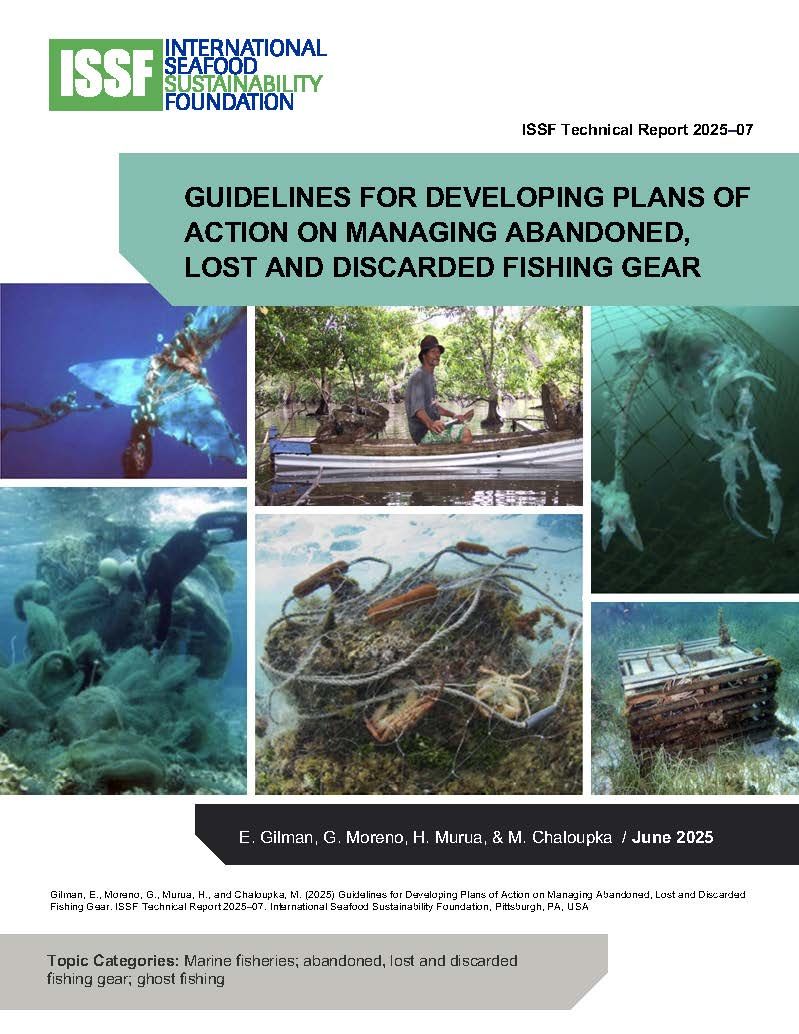Document: ISSF 2025-07: Guidelines for Developing Plans of Action on Managing Abandoned, Lost and Discarded Fishing Gear
The adverse ecological and socioeconomic effects from at-sea abandoned, lost and discarded fishing gear (ALDFG) have become increasingly problematic over recent decades. Adverse impacts include: ghost fishing; marine wildlife ingestion; distribution and transfer of toxins and microplastics into marine food webs; and altered distributions and behavior of species that raft on or aggregate beneath floating ALDFG and fishing aids, including the transport of invasive non-native species and distribution of microalgae that cause harmful algal blooms.
ALDFG also causes habitat degradation; obstruction and damage to maritime sectors such as from fouling marine vessels and damaging submarine cables and in-use fishing gear; reduction of socioeconomic values of coastal areas; and costs for ALDFG disablement or removal.
The guidelines in this report provide stakeholders with recommendations on the development of plans of action (POA) on managing the occurrence and adverse effects of abandonment, loss and discarding of fishing gear and aids. POA-ALDFG can contribute to ameliorating this particularly damaging component of marine debris. POA-ALDFG can have local fishery-specific, national-level, to broad regional-level scales. ALDFG Action Plans can assist fishery stakeholders to prepare to meet the more rigorous requirements on ALDFG and ghost fishing under the Marine Stewardship Council’s fisheries standard.
The guidelines also define criteria on when adoption of a POA-ALDFG is warranted. The guidelines are designed for application across data-limited to data-rich fisheries, from small-scale to industrial and large-scale fisheries, across gear types, and across the various forms of fisheries management systems.
Downloads: 151 | Views: 12
